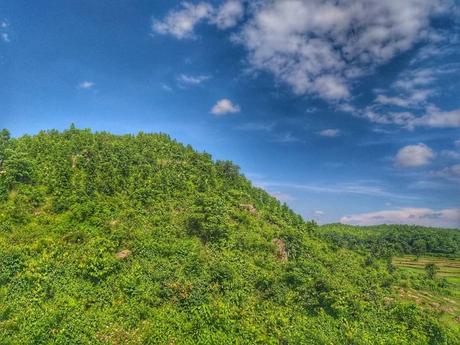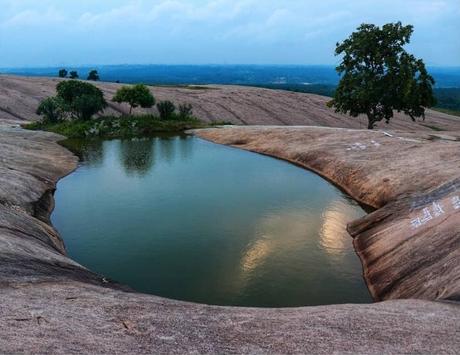Ranchi, the capital city of the Indian state of Jharkhand is located in the southern part of the Chota Nagpur Plateau. Jharkhand was carved out from the state of Bihar on 15th November 2000 and was recognized as a separate state.
Ranchi was considered to be a hill station and was the summer capital of the undivided Bihar. As of now, due to industrialisation, the weather no more remains cool and pleasant during summers but gets hot and humid. However, during the months of winter, the temperature drops drastically to the freezing point in some of the areas in the city.
Keep reading to know more about the fading hill station, Ranchi.
Table Of Contents
How Ranchi Became The Summer Capital Of Bihar?
The East India Company invaded the Chota Nagpur Plateau in the 1700s which was a part of Bihar then. It developed full control over the region by the 1900s and made Ranchi the headquarter of the Chota Nagpur region.
Meanwhile, the British Colonial Rulers were pleased by the chilled weather of Ranchi and decided to establish it as a summer health resort. Soon, the news of the healthy and pleasant weather of Ranchi spread and soon after, the Britishers made it the summer capital of Bihar.

Pic Credit: Insta Handle - viiirus07
Why Ranchi Has A Cooler Temperature?
Ranchi is called as the Shimla of Jharkhand because of its pleasant weather. There are various geographical reasons as to why Ranchi had a cooler temperature earlier and why even now the temperature of some places in Ranchi falls to the freezing point during winters.
Plateau Region
The sub plateau of Ranchi is the largest part of the Chota Nagpur plateau. The region has an average height of 2,300 ft and the city of Ranchi lies at a height of 2,135.83 ft above the sea level. As Ranchi is located in a higher altitude, the ability of the air to contain heat is less because of the lower air pressure.
Also, the temperature falls 5.4 degrees Fahrenheit i.e 9.8-degree centigrade every 1000 ft above the sea level if there is no snow or cloud and the sky is clear whereas, the temperature falls 3.3 degrees Fahrenheit i.e 6-degree centigrade every 1000 ft above the sea level if it's raining, snowing or there is a cloud.

Pic Credit: Insta Handle - boomerang_babaji
Hilly Topography
Another geographical fact is that a plateau also known as high plain is often continued by deep hills on one or more sides. Ranchi being a plateau is surrounded by several hills which are also another reason for the fall in temperature during the winters.
Hills are cooler because of the same reason higher the altitude, lesser is the ability of the air to contain heat because of the lower air pressure. Also, some of the areas do not get direct sunlight as the hills blocks it which further makes the region cooler.
Waterfalls
Due to the elevation, the rivers flowing through the sub plateau slopes down to flow further creating waterfalls. There are appx eight to ten waterfalls in the region. '
Water has a higher heat capacity then air, which means water requires more energy to get heated up. In order to get vaporize, water starts collecting heat from the surrounding areas and this is why areas near water bodies are comparatively cooler.
Forest
The city of Ranchi is surrounded by dense forest, to be more appropriate 29.55% of the total area of Jharkhand is covered under forest. Trees are the natural cooling system as they absorb carbon dioxide and lower the effect of global warming.

Pic Credit: Insta Handle - voyagecollectives
Which Region In The Ranchi District Is The Coldest?
Kanke, a census town in the district of Ranchi is the coldest town where the temperature falls as low as 0-degree centigrade which is the freezing point during the months of winter.
How Is The Climate Of Ranchi?
Ranchi has a subtropical humid climate. The main seasons are summer, monsoon, and winters. The summer season prevails from mid-March to Mid June with the temperature varying from 30-degree centigrade to 45-degree centigrade. April and May are the hottest months.
Monsoon starts Mid June and extends till the month of August with an annual rainfall of 1,430 mm.
Winter season prevails from the month of November to February and the temperature varies from 0-degree centigrade to 15-degree centigrade. December and January are the coldest months.
Why Ranchi Is No More A Hill Station?
Ranchi is no more considered as a hill station because of the significant increase in its temperature. The main reason for the drastic change in the weather of Ranchi is deforestation.
Many trees were uprooted for using the forest land into setting up Industries, Power Plant, Roads, Dams, Mining, etc.

